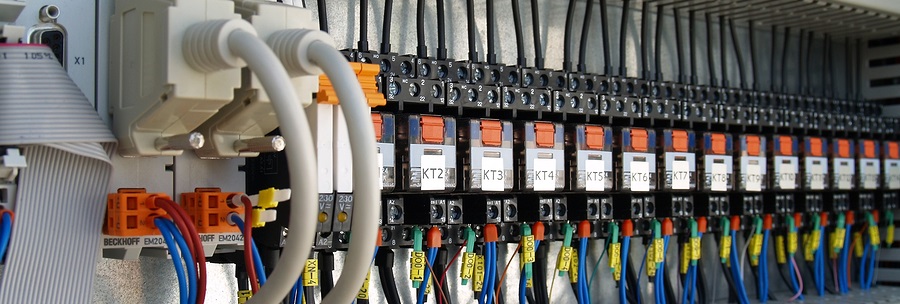|
NEED A SPECIAL SOLUTION ?
Register with us to have access to all of our services
REGISTERED USERS:
Registered users have full access to our library of machine and component manuals, as well as the following features: Full 24 hour emergency support response. We usually arrive at your factory within the hour. Online access to all transaction records. You can lookup past invoices, check old quotations or payments. Use of our proprietory asset management system to manage spare stock, spare parts and machinery. Free OEE consultation, and assistance with implementation, to get the most out of your factory. Signup Now! Maintenance schedules are typically managed using computerized maintenance management systems (CMMS) or enterprise asset management systems (EAM). These systems help track and schedule maintenance tasks, inspections, and repairs for all equipment and machinery in the factory. Here are some common steps for managing maintenance schedules effectively:Asset Inventory: Create a comprehensive inventory of all equipment and machinery in the factory, including critical information such as asset type, location, serial numbers, and maintenance history.Preventive Maintenance: Develop a preventive maintenance schedule based on manufacturer recommendations, industry best practices, and historical data. Regularly scheduled maintenance helps prevent breakdowns and extends the lifespan of equipment.Work Order Management: Use a centralized system to create, assign, and track work orders for maintenance tasks. Ensure that work orders are prioritized based on urgency and criticality.Inspections and Audits: Conduct regular inspections and audits to identify potential issues before they escalate. Document findings and track corrective actions to ensure compliance and equipment reliability.Data Analysis: Utilize data analytics to monitor key performance indicators (KPIs) related to maintenance, such as mean time between failures (MTBF), mean time to repair (MTTR), and overall equipment effectiveness (OEE). Analyzing data can help identify trends and areas for improvement.Training and Skills Development: Invest in training programs for maintenance personnel to ensure they have the necessary skills and knowledge to perform maintenance tasks effectively and safely.By implementing a systematic approach to maintenance schedule management, factories can optimize equipment performance, minimize downtime, and improve overall productivity. If you have specific questions or need further assistance in managing your maintenance schedule, feel free to provide more details so that we can offer tailored advice. ☎ Call today to find out how we can help you! Reduce your labour requirements and supercharge your factory's production. FACTORY MAINTENANCE SERVICES Ask for a quote today. Regular inspections and audits play a crucial role in effective maintenance schedule management in a factory setting. Here are some ways in which inspections and audits contribute to maintaining equipment reliability and optimizing maintenance schedules: 1. Identifying Potential Issues Early: Regular inspections and audits help identify potential issues, wear and tear, or signs of deterioration before they escalate into major problems. By catching issues early, maintenance personnel can address them proactively, minimizing downtime and costly repairs.2. Ensuring Compliance: Inspections and audits are essential for ensuring that equipment and machinery meet safety and regulatory standards. By conducting regular checks, factories can maintain compliance with industry regulations and standards, reducing the risk of accidents, fines, and disruptions to operations.3. Optimizing Maintenance Schedules: Insights gained from inspections and audits can help optimize maintenance schedules by identifying areas that require more frequent maintenance or adjustments to preventive maintenance tasks. By understanding the condition of equipment through regular assessments, factories can plan maintenance activities more effectively and allocate resources efficiently.4. Enhancing Equipment Performance: By monitoring equipment performance through inspections and audits, factories can make data-driven decisions to improve overall equipment reliability and efficiency. Identifying performance trends and patterns can lead to adjustments in maintenance procedures, schedules, or replacement strategies, ultimately enhancing equipment performance and productivity.5. Documentation and Analysis: Inspections and audits provide valuable data that can be documented and analyzed to track equipment condition over time. This data can be used to identify recurring issues, measure maintenance effectiveness, and make informed decisions about equipment maintenance, replacement, or upgrades.6. Empowering Maintenance Teams: Regular inspections and audits empower maintenance teams by giving them a good understanding of equipment condition and performance. This information enables maintenance personnel to prioritize tasks, allocate resources effectively, and plan maintenance activities strategically to maximize equipment uptime and longevity.Overall, regular inspections and audits are essential components of a comprehensive maintenance strategy in a factory setting. By incorporating these practices into maintenance schedule management, factories can proactively maintain equipment, minimize downtime, and ensure smooth operations. Scheduled maintenance services Machine refurbishing Consultancy for aquiring new machinery Consultancy for factory upgrades Factory Automation Compressor maintenance Compressed airlines installation Electrical Lighting and Power Factory Automation ☎ Call today to find out how we can help you! |
